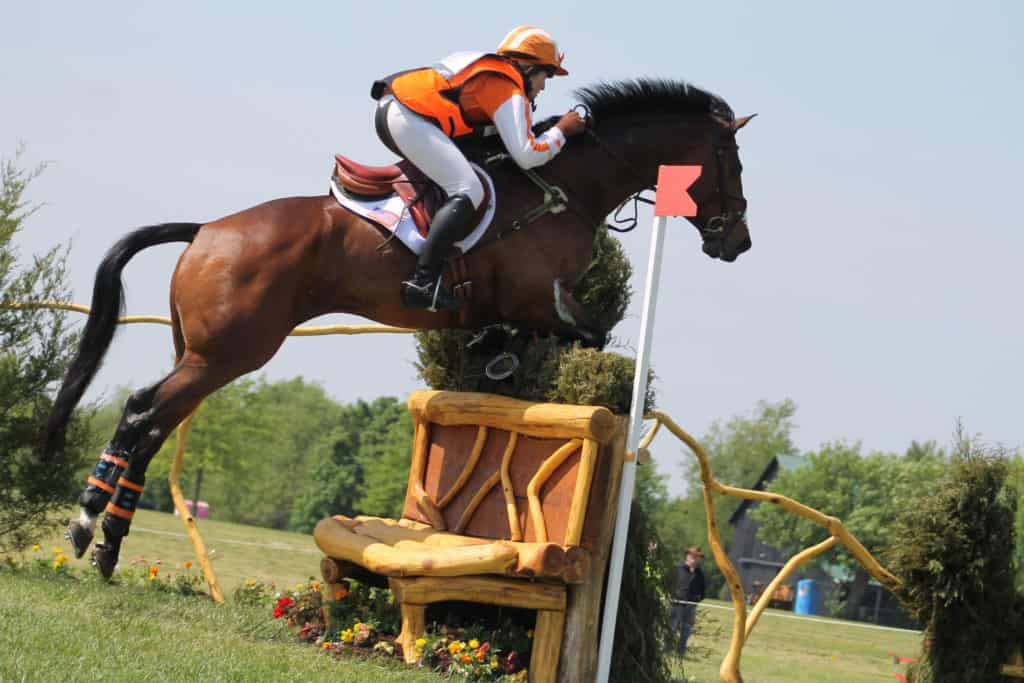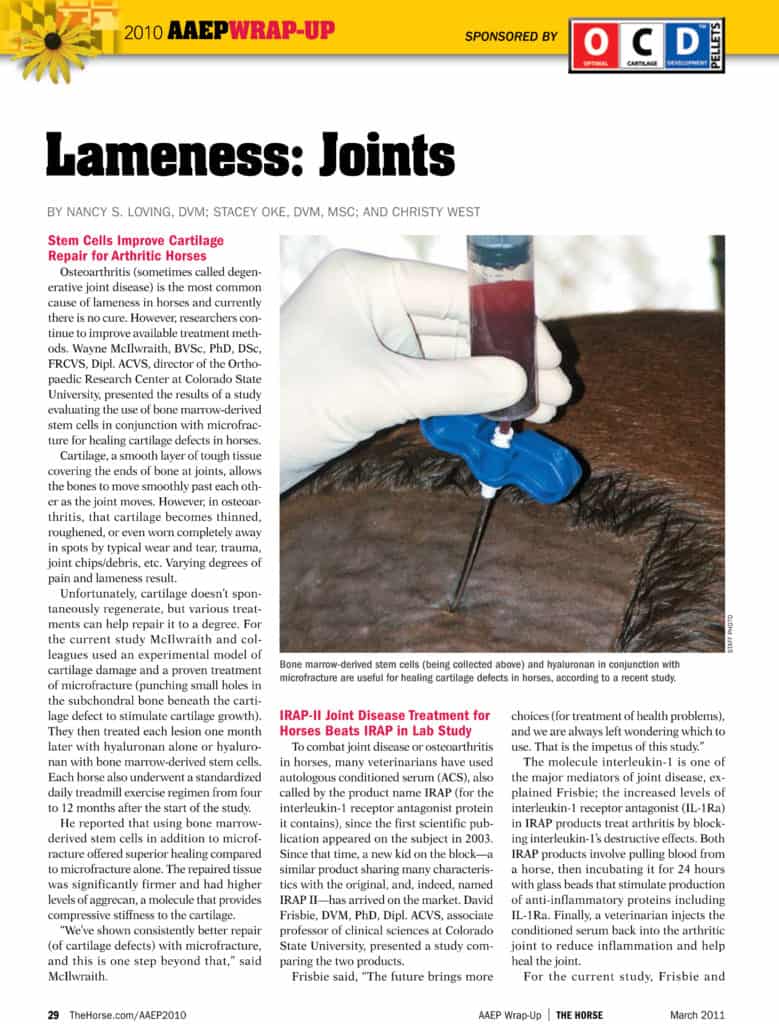
Advances in Equine Joint Pain Management
One researcher evaluated pharmacologic methods of osteoarthritis management and recent pain control advances.

One researcher evaluated pharmacologic methods of osteoarthritis management and recent pain control advances.

Osteoarthritis (OA) is a degenerative and career-compromising disease in horses.

Nearly 50% of high-performance barrel racers evaluated showed radiographic changes in their fetlock joints.

Using computational modeling, researchers can examine “what if” scenarios related to equine injuries.
When a horse needs surgery, what’s his prognosis for a full recovery? What problems can occur during recovery?

A Thoroughbred filly undergoes arthroscopic surgery to remove a bone chip from her left hind fetlock, increasing her chances of staying sound for horse racing. Dr. Chris Johnson of Woodford Equine Hospital in Versailles, Ky, explains the procedure.

During the 2010 American Association of Equine Practitioners convention, veterinarians discussed the use of stem cells for arthritis in horses, irap vs. irapII, joint health supplements, TMJ disease, non-surgical pastern joint fusion, stifle abnormalities in cutting horses, and embryonic stem cells for tendon repair.

It has been suggested that 60% of equine lameness problems are related to osteoarthritis, which stresses the importance of advancements of both medical & surgical treatment options.

Equine joint supplements have been purported to decrease inflammation, increase mobility, and more. This guide to equine joint supplements includes a seven-step quality evaluation process and tips for choosing a safe and effective product.

Equine joint injections can help veterinarians diagnose lameness or medicate a horse’s painful joint.
A joint is defined as an anatomic union or junction between two or more bones. There are three basic types of joints in the horse: Synovial, fibrous, and cartilaginous.

New imaging technologies, such as MRI, CT, digital ultrasound, and nuclear scintigraphy, have helped us understand anatomy better and improved our ability to visualize joint injury. As a result, we’re now able to utilize nonsurgical joint therapies.
Having evolved to flee in an instant, horses are equipped with a “stay apparatus” that allows them to remain upright for long periods of time. But this mechanism isn’t foolproof and sometimes it causes more harm than good.
Learn how to keep splints (bony lower leg swellings) from becoming permanent blemishes or problems that interfere with a horse’s athletic career.

Learn about breakthrough treatment protocols for manage equine joint inflammation.

Joint injections can safely localize lameness or medicate a joint, but they might cause complications.
Stay on top of the most recent Horse Health news with
"*" indicates required fields